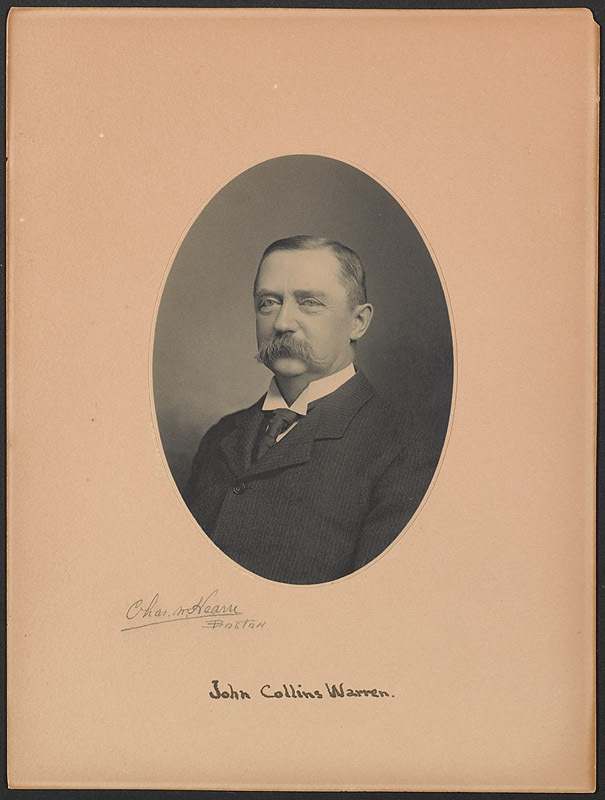John Collins Warren & William Jurian Kaula
Born in Boston in 1871, William Jurian Kaula was a New England landscape watercolor artist and oil painter. His training began at the Massachusetts Normal Art School. Kaula continued on to Boston's Cowles Art School and from 1891 to 1896 he studied in Paris at the Académie Julian.
In 1896 Kaula returned to Boston to study under Edmund Tarbell of the School of the Museum of Fine Arts. Tarbell had a pronounced effect on Kaula’s work and Kaula is often referred to as a “Tarbellite.” Kaula exhibited extensively, winning a medal at the 1915 Pan-Pacific Exposition.
Kaula met his wife, artist Lee Lufkin Kaula, in France in 1894 and they were married in 1902. In 1905 William and Lee Kaula moved into the newly built Fenway Studios of Boston, where they long maintained their workshop.
The Warren-Kaula teaching watercolors mark a departure in style and subject for Kaula but are not his only known examples of medical work. Kaula illustrated John Collins Warren’s 1895 Surgical pathology and therapeutics to which the Center for the History of Medicine owns the artist’s original watercolors and drawings.
Born on May 4, 1842, John Collins-or "Coll"-Warren was Harvard-educated like the two generations of John Warrens before him, graduating from the College in 1863 and the Medical School in 1866. After completing his studies in Europe, he returned to Harvard Medical School, joining the faculty as an instructor in surgery in 1871. He became a full professor of surgery in 1893, then the first Moseley Professor of Surgery from 1899 until he was granted emeritus status in 1907. Warren was a member of the staff of the Massachusetts General Hospital from 1869 to 1905 and was then on the hospital's Board of Consultation from 1905 until his death on November 3, 1927.
Warren's principal area of research and expertise was the surgical treatment of tumors. He published extensively on this subject, specializing in surgical treatments for breast cancer. He developed a particular model of dissection knife for use with tumors of the breast and had it produced by Codman and Shurtleff, the famous Boston firm of instrument makers. Warren was one of the foremost proponents of Joseph Lister's antiseptic procedures for surgical operations.
For nearly a quarter of a century, he was the chairman of the Cancer Commission of Harvard University and was instrumental in raising funds for the construction of the Collis P. Huntingdon Memorial Hospital for Cancer Research. The Longwood campus remains Dr. Warren's most enduring memorial at Harvard Medical School, as he and Dr. Henry Pickering Bowditch together were the driving force for raising donations for the construction of the Quad facilities and encouraging local hospitals to move to the new medical area.
Warren taught at Harvard Medical School for 36 years, and used the watercolors painted for him by William J. Kaula from 1896 until 1907. When Warren died in 1927, the watercolors were bequeathed to Harvard Medical School’s Department of Anatomy and were accessioned into its Warren Anatomical Museum in May 1929. Much of the collection was formally combined the Bigelow-Wallis watercolor collection to form a composite anatomical teaching series.


